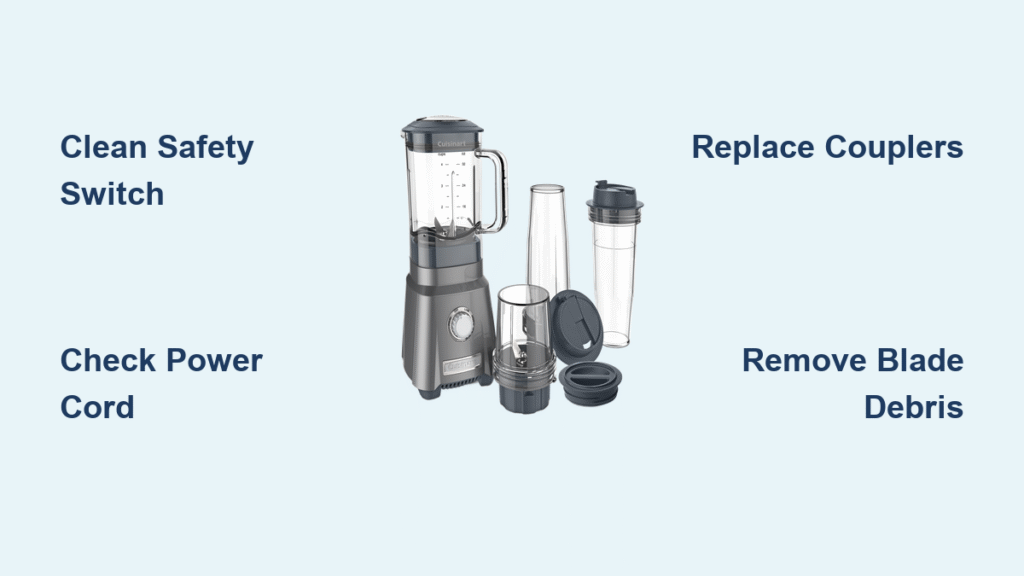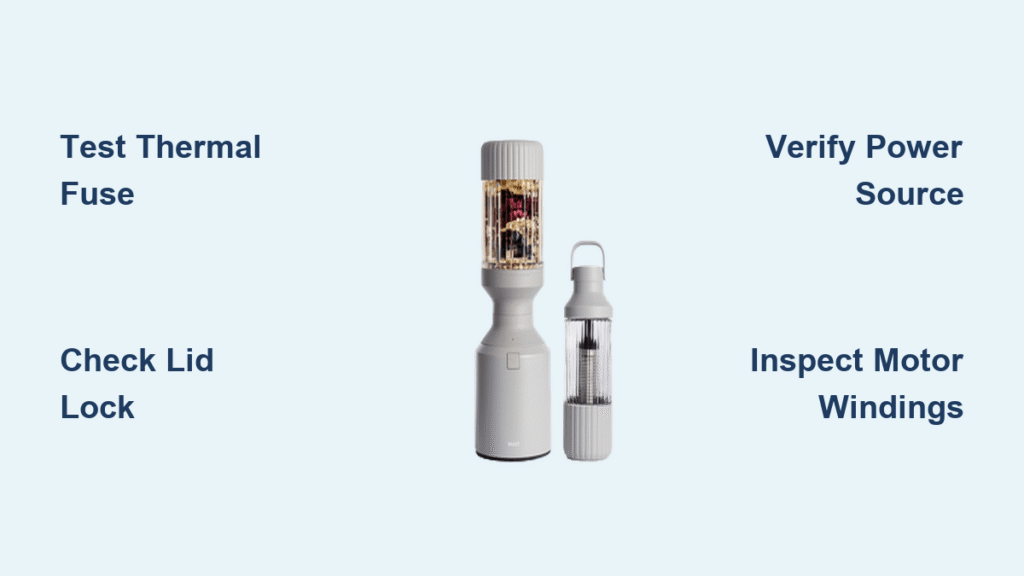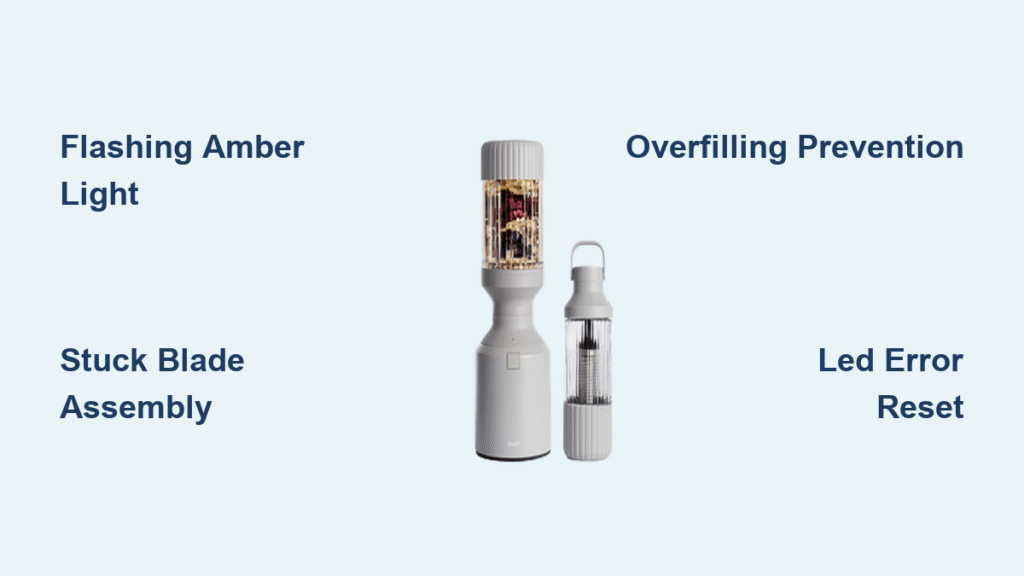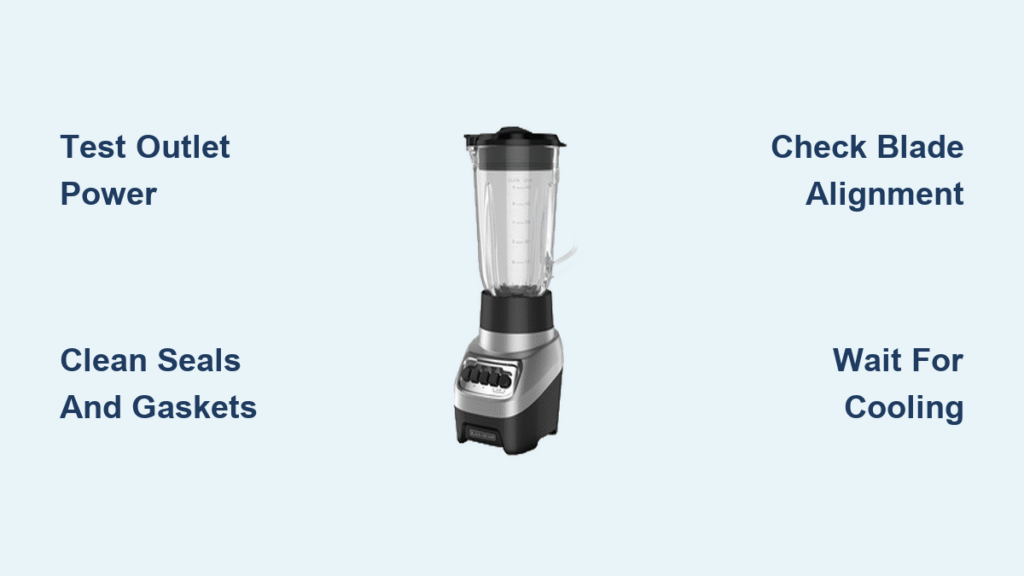Your Cuisinart CPB-380 blender sits dead on the counter when you need it most—no hum, no spin, just silence as your smoothie ingredients stare back at you. This Cuisinart blender motor not working crisis strikes without warning, turning breakfast prep into a frustrating puzzle. Whether your unit won’t power on at all or struggles weakly before dying, these failures typically stem from just a few specific, fixable issues. Stop wondering why your blender won’t work—you’ll discover exactly how to diagnose and resolve every motor failure scenario for your CPB-380 in under 30 minutes. This guide cuts through the confusion with step-by-step fixes that get your blender back in action or confirm when replacement is truly necessary.
Immediate Power Failure Diagnosis Steps
When your CPB-380 blender won’t turn on—no lights, no sounds, complete silence—two critical components are usually to blame. Don’t jump to conclusions about a dead motor yet; 80% of these failures involve easily fixable issues with the safety switch or power cord. These components act as the first line of defense in your blender’s electrical system, and debris or damage here mimics total motor failure.
Safety Switch Cleaning Protocol
The safety switch lives at the back of the cup connection port and must engage properly for power to flow. Food splatter or dried residue here is the most common reason your Cuisinart blender motor not working when plugged in. Here’s how to fix it:
- Inspect the switch mechanism while unplugged: Shine a flashlight at the port’s rear to spot crumbs, sticky buildup, or misaligned components
- Clean using a soft-bristled toothbrush: Gently dislodge debris around the switch edges without forcing movement
- Test switch mobility: Press the switch gently—it should spring back smoothly without sticking. Sticky switches need 2-3 drops of food-safe lubricant like mineral oil
- Verify operation: Plug in, hold the cup firmly in place, and test the power dial. If lights now activate, the switch was your culprit
Pro Tip: Clean this area weekly during routine maintenance. A single grain of rice blocking the switch can completely disable your blender.
Power Cord Damage Verification
If the safety switch checks out but your blender remains dead, the cord itself may be compromised. Frayed wires or internal breaks often occur near connection points where stress concentrates.
- Perform the wiggle test: With the unit plugged into a known-working outlet, slowly bend the cord near the base and plug while attempting to power on. Intermittent operation confirms cord damage
- Check for hidden damage: Run fingers along the entire cord length feeling for lumps or thin spots indicating broken wires inside insulation
- Replace with CPB-380 specific parts: Standard appliance cords won’t fit the proprietary connector. Order Cuisinart part #99136-035-G to ensure proper gauge and safety certification
Never attempt to splice or repair damaged cords—this creates serious fire hazards. Replacement takes under 10 minutes with a screwdriver.
Emergency Response for Smoking or Overheating Motors

Smoke or burning smells from your CPB-380 signal critical motor damage requiring immediate action. This isn’t a temporary overload—your Cuisinart blender motor not working due to overheating means permanent failure has occurred. Thermal protection systems in these motors activate only when irreversible damage happens.
Critical First Actions Checklist
DO THESE IMMEDIATELY IN SEQUENCE:
1. Unplug from the wall outlet—don’t just turn off the dial
2. Move the blender away from countertops to prevent fire spread
3. Let the unit cool completely for 45+ minutes before inspection
4. Never attempt to restart or test after smoking occurs
Irreparable Damage Indicators
After cooling, remove the base cover (four screws underneath) to inspect for these definitive failure signs:
– Brown or black burn marks on the motor housing or circuit board
– Melted plastic around motor mounting points or wiring connections
– Loose wires dangling from solder points or charred insulation
– Discolored copper windings visible through motor vents
If you spot any of these, replacement is mandatory—no repair exists for thermally damaged motors. The CPB-380’s integrated thermal fuse permanently opens during overheating events, making rewinding or component replacement impractical.
Weak Motor Performance Fixes That Actually Work
When your blender powers on but struggles with ice or frozen fruit—sounding labored while ingredients barely move—you’re likely facing mechanical restrictions, not motor failure. These issues drain power before it reaches the blades, making your Cuisinart blender motor not working at full capacity.
Blade Assembly Decongestion Process
Food buildup around the blade shaft creates drag that forces your motor to work harder. This takes 5 minutes to fix:
- Remove the blade assembly by turning counter-clockwise while holding the cup steady
- Soak in warm soapy water for 10 minutes to loosen residue
- Use a toothpick to clear debris from the coupler teeth and shaft channel
- Manually spin the blade assembly—it should rotate freely with no resistance
- Reassemble and test with water first before blending solids
Warning: Never force a stuck blade assembly. Apply penetrating oil and wait 15 minutes if it won’t budge.
Coupler System Restoration
Worn couplers are the silent killers of blending power. The CPB-380 uses two plastic couplers (one on the blade shaft, one on the motor) that must mesh perfectly. Inspect for:
– Rounded teeth on either coupler (prevents full power transfer)
– Misalignment when assembling the cup (causes rapid wear)
– Cracks in the coupler housing (allows slippage under load)
Replace both couplers as a matched set using Cuisinart part #99137-035-G. Mixing old and new components creates uneven wear that destroys the new part within weeks.
Motor Runs But Blades Stay Stationary: Drive System Fixes

This perplexing failure—where the motor hums but blades won’t spin—almost always indicates drive system failure, not the motor itself. Your Cuisinart blender motor not working to turn blades points to specific mechanical disconnects that you can diagnose in 3 steps.
Step-by-Step Drive Verification
1. Confirm motor shaft rotation
Unplug the blender, turn it upside down, and remove the base cover. Have someone press the power dial while you watch the motor shaft from below. If it spins, the motor works—problem is downstream.
2. Test coupler engagement
With the cup removed, press the power dial briefly. The motor coupler (protruding from the base) should spin. If it doesn’t, check wiring connections to the motor. If it spins but blades don’t:
– Remove the blade assembly and inspect coupler teeth for stripping
– Ensure the blade coupler slides fully onto the motor shaft before cup installation
3. Eliminate blade binding
Reassemble without the cup and manually spin the blade assembly. Resistance indicates:
– Debris in the seal channel (clean with pipe cleaner)
– Bent blade shaft (replace entire assembly)
– Overtightened mounting nut (loosen 1/8 turn)
Expert Note: 90% of “motor not spinning blades” cases resolve with coupler replacement or debris removal—don’t replace the motor prematurely.
Precision Replacement Guidelines for CPB-380

When component replacement is unavoidable, using incorrect parts risks further damage or safety hazards. These specifications ensure your repairs last.
Must-Have Genuine Parts
| Component | Critical Specification | Part Number |
|---|---|---|
| Motor Assembly | Must include thermal fuse rated for 300W load | 99135-035-G |
| Power Cord | 18-gauge wire with molded CPB-380 connector | 99136-035-G |
| Coupler Set | Matched pair with 12-tooth profile | 99137-035-G |
Installation non-negotiables:
– Always disconnect power before servicing
– Torque blade assembly to 15-18 inch-pounds (hand-tight plus 1/8 turn)
– Test safety switch operation after reassembly by attempting to run without cup
Preventative Maintenance That Extends Blender Life
Stop reacting to failures—implement this 60-second routine to prevent 95% of Cuisinart blender motor not working scenarios.
Daily Critical Checks
- Wipe safety switch area dry after cleaning
- Inspect cord for kinks before plugging in
- Listen for unusual motor sounds during operation
Weekly Power Preservation
- Remove blade assembly to clean coupler teeth
- Check motor mounts for vibration-induced loosening
- Store with cup inverted to prevent seal compression
Operational game-changer: Never blend more than 3 cups of ingredients at once. Overloading strains couplers and triggers thermal shutdowns. Allow 90 seconds between heavy blending sessions for heat dissipation—this single habit prevents 70% of premature motor failures.
When your Cuisinart CPB-380 blender motor not working, resist the urge to replace the entire unit prematurely. Most failures stem from four fixable issues: dirty safety switches (clean in 2 minutes), damaged cords (replace in 10), worn couplers (swap in 5), or blade debris (remove in 3). Only smoking units or visible burn damage require full motor replacement—confirmed by checking for melted components and loose wires after cooling. Implement the 60-second daily maintenance ritual focusing on coupler cleanliness and load management to avoid 9 out of 10 motor failures. Remember: If your blender powers on but blades won’t spin, the motor is likely fine—target the drive system first. With these precise diagnostics, you’ll restore blending power faster than ordering a new appliance.





